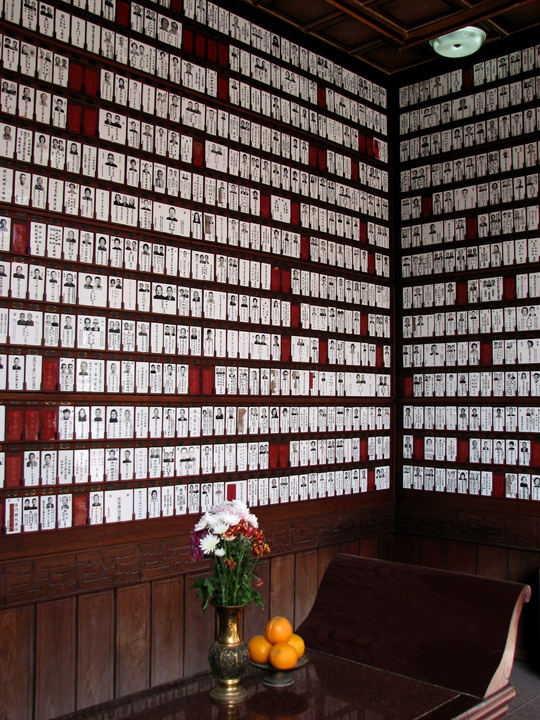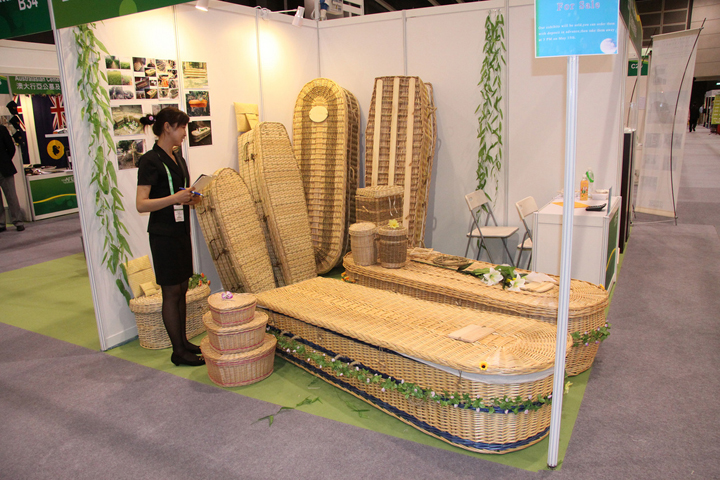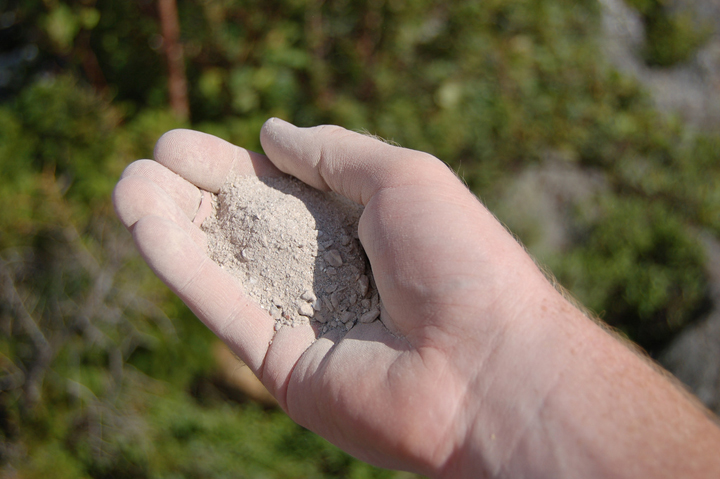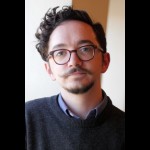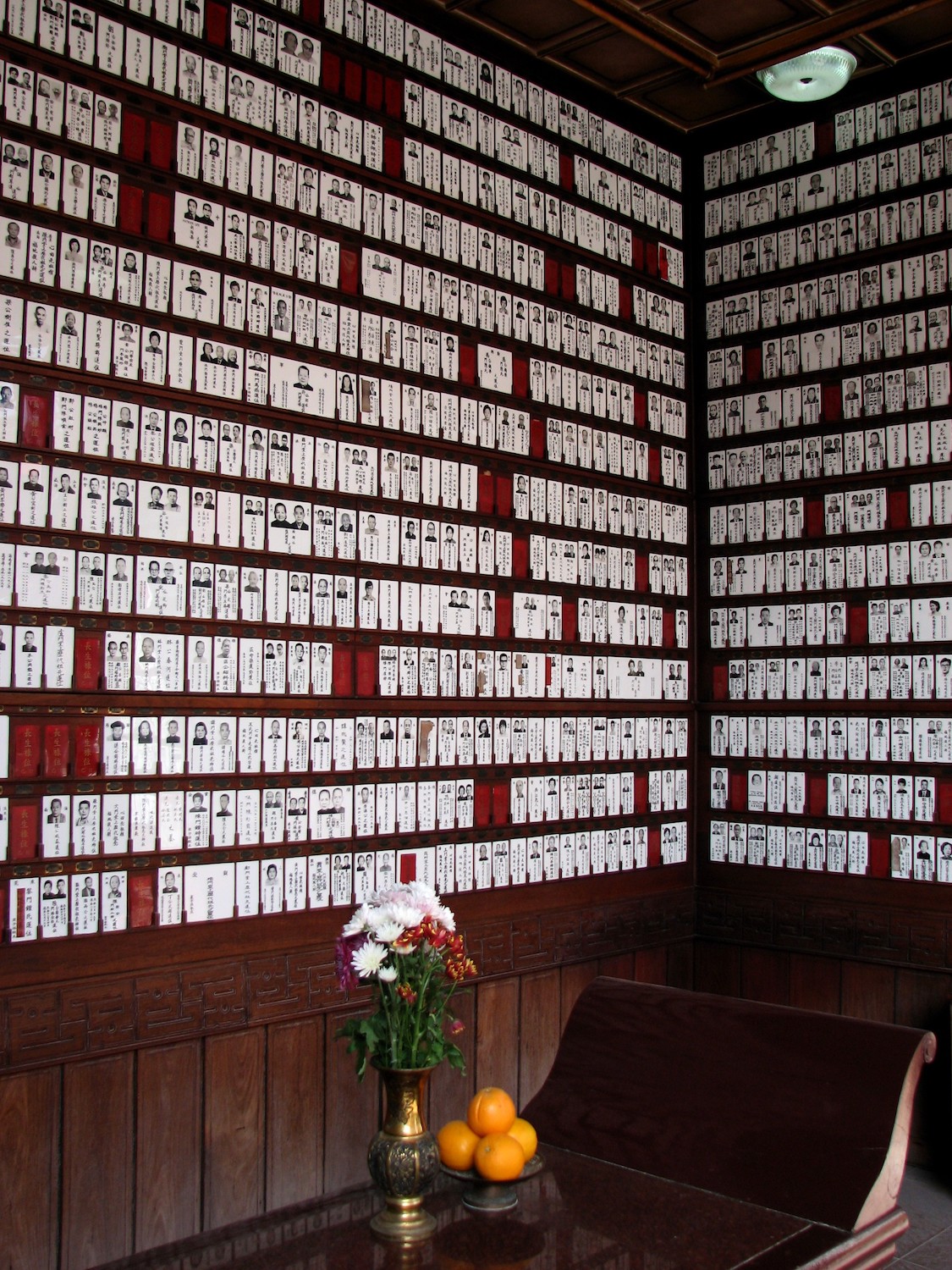
Contemporary Urban Necro-Politics and Ritual Negotiation
John Borchert argues that as space for the living and the dead grow closer, death and mourning are reshaping urban spaces. Examining ritual negotiations in urban Asian and North America, Borchert considers how emerging funerary practices reflect new urbanisms and new embodiments.
White ceramic in the round, infographics informing its interior spaces - brimmed with soil, a seedling rises from it, smart phone by its side. This is the Bios Incube, an internment system which fertilizes and irrigates a seedling using a combination of human cremains and a soil mixture – all tracked and charted by the accompanying app. On April 6, 2016 the Bios Incube reached its crowd-funding goal of €73,671 and is currently in production. This ecologically oriented, technologically tuned, and sharply marketed product exemplifies how perceptions and performances of mourning and memorialization are changing under emerging conditions of capital, hyper-urbanization, and environmental concerns. [i] Bodies growing closer together, confined by the ecological and architectural limits of the modern city, cultivate a hyper awareness of the limits of space. Bodies moving closer as spaces grow functionally smaller heightens the frequency of interaction. (ibid.: 9–10).
How do evolving funerary practices reflect new urbanisms or new embodiments? What can these practices teach us about the changing face of ritual and its ability to reshape political and material environments? Emerging ritual negotiations in urban Asia and North America formulate a post-human body in the supermodern city incorporating not just human flesh but a spectrum of life (or the passage of life) from the organic to the technological through ritualized practice that entangle all of the above. Here I articulate a necro-politics [ii] of urban funerary practices and suggest a material theory of ritualizing death in the big city as a new way, as J.Z. Smith says, “of paying attention” [iii] to space. Smith reads ritualized space as a “focusing lens, establishing the possibility of significance by directing attention, by requiring the perception of difference,” and I pick up this lens along with some posthuman theory to look at the entangled ways death and mourning are reshaping urban spaces. [iv]
Image 1: Columbarium in Po Fook Hill cemetary, Hong Kong. Image Credit.
Processual spatial compression within cities condition emerging locations of burial and memorialization in the urban and beyond (oceanic, wooded and digital). As space for the living and the dead grow closer, greater attention is paid to the means of burial and mourning. Emergent practices include a sea-burial tethered to an online memorial as the location for tribute and worship. [v] Temporary burial plots are reserved for short-term burial and subsequent exhumation and relocation. The re-imaginings of rituals explored here re-articulate and re-navigate these spaces. Such necro-polticial decisions involve municipal and sovereign control over death and dying. Such ritualized cartographies go beyond the terminal spatialities modeled by diminishing locations for burial. Instead, beginning at the point of what can be read as a calculable life, human embodiments include the digital in a spectrum of vitality ranging from the sea to the CPU and arriving at an entirely new schema of what and where a place may be and what and who may constitute it.
The introduction of computational software and hardware broaden possibilities for what ‘quantity’ can mean. A CPU’s ability to calculate with an accuracy and speed beyond human capacities brings calculability into para-human or post-human realms of possibility. This quantifiable, calculable environmental milieu frames ways of knowing. Human geographer Nigel Thrift sees this new world “based on continuous calculation at each and every point along each and every line of movement” as normalizing calculation to such a degree that calculative sensoria begins to lose precision and permeate into more qualitative, speculative determinations. [vi] These moments, argues Thrift, have “produced new figured ontologies by decomposing and recomposing the world in their own image … defining not so much what is to be done in any situation but how that situation turns up in the first place.” [vii] Thrift argues that a nomadic and materially permeable sense of time and space derives from an awareness of the quantitative and calculated potential of the world around us. In other words, as the potential for calculating anything and everything becomes possible through advanced computational power, all things come under the gaze of the calculable. Thrift describes these porous boundaries between quality and quantity, where overwhelming and potentially limitless calculation becomes factored into a qualitative reasoning, as qual_culation. [viii]
The qualculative background re-matters environments as it changes relationships within an understanding of that physical world. Ambient information fuses with materialities and both space and time become more fluid as “track and trace” systems (where bodies become data and space becomes the field or matrix of that data) begin to give a more flexible, impermanent, and nomadic sense of space-time. [ix] One example of such “track and trace” systems is the implementation of a mobile app to track herds of sheep in Wales. These shepherds can see their flock in a new, numerical way. Similar modalities of qualculation become fully realized in the claustrophobic abundance where calculation intersects burial and memorialization rites, creating a spectrum of articulated locations for negotiating control of spatio-religious practices.
Asian municipalities raised prices on burial plots, forcing people towards cremation. Rituals are created to “make-up” days that were skipped due to condensed spatial burials. Legislative councils chart cremation percentages among the population. The numerical temperature of the crematorium dictates whether human remains are considered a pollutant or not. The times of day allowed for sea burial and the number of ships allowed are tightly monitored and controlled. The time an urn takes to degrade in a woodland burial is accounted for. The acres of woodland burial space and the number of burial slots within them are plotted. The number of burial websites currently running, along with the bandwidth and hardware necessary to access them, is all accounted for. Foot traffic to and from cemeteries during certain times of the year is compared to the number of visitors to a memorial site. [x] Bodily remains, when transformed into gems, can be priced according to carat. The “Green Burial Council” awards one, two, and three leaf ratings, a metric of how sustainable certain burial practices may be.
Image 2: Hong Kong Funeral Trade Show, Image Credit: Curt DeBaun
This overwhelming list (in its own qualculative format) illuminates some calculations that become the dull white-noise of a contemporary condition of dying and mourning. Capital, time, population, temperature, hours, ships, rates of disintegration, acreage, plots, sites, carats, and foot traffic are all qualculated and accounted for.
So, what can account for all of this? How can we model these interactions? Feminist theorist Rosi Braidotti articulates a new unit of common reference for human bodies tracked through material socio-political and eco-relations. These new relations complicate distinctions between the biological and the political life. Braidotti’s posthuman body resists a binary and is inherently and primarily inseparable from the world at large, moving (within Thrift’s qualculation) fluidly and nomadically through space, going beyond skin through interactions with technology and the natural world. [xi] Just as Thrift marks the dissolution of distinctions between the qualitative and quantitative in the overwhelming calculability of the hyper-modern life, Braidotti sees a blurring between the biological and political-cultural lives of things. [xii] Ritual negotiations of new burial spaces and practices are one location to observe and critique the performance of these dissolutions or porosities.
If Thrift’s qualculation is second nature to the changes undergirding the new urban, Braidotti’s posthuman is the body that lives there. Techno-bodies navigate a continual relationship between natural and digital space through ritual orientations between living and dead bodies. The creators of the “Bios Urn” recognize this fluid –onto-temporality when saying, “Thanks to its manufacturing process, Bios Urn does not “expire”, and as such, its use is not bound by any specific period, epoch or place.” These bodies slide easily between vast natural spaces and public/private digital spaces as a way of creating a relationship for and around the dead.
The Bios Urn (and other tech/green burial practices) complicates relationships between human and plant life by integrating the materiality of both and, as a result, brings human death into the temporal frame of tree life. Sea burial practices, beginning with the need to mark the human occasion but ending by negotiating both sea and digital space, expand the possibilities for understanding how burial practices impact oceanic life. Qualculated negotiations of burial spaces, times, and places in these new urban spaces demonstrate a post-anthropocentric (but not yet cohesive) economy, navigating both an ecological crisis and emerging necro-geographies. The fluid net of myriad calculations that perpetually re-encounters the entirety of the death-burial-ritual assemblage exemplifies a posthuman necropolitics. Calculated control spans from the depths of the ocean (where bodily remains are cast, a space for the dead) to the digital space (a place for ritualized remembrance, a space for the living) to everything in between including the hygienic norms surrounding the use of cremated remains in tattoo ink and the navigation of shipping lanes dictating sea burial and capitol. Death in the new city spans gaps from the smallest of spaces between roots in the ground where familial remains are allowed, to the columbaria of a crowded city, to the vast techno-space of the Internet. The expansive localities and intersections of various forms of life (plant life, sea life, human life) and death constellate a post-anthropocentric, globalized and full-spectrum assemblage through which both emerging embodiments can be articulated.
Image 3: Ashes. Image Credit.
It is through the “paying attention” of J.Z. Smith that spaces are marked, created, and recreated. Human death and subsequent negotiations of material and ideological bodies are an occasion for a particular mode of paying attention to space, place, and navigations through them. Radical necro-embodiments are negotiated with and through ritual structures. Performative and orienting aspects of ritualization mark nodes of contact between the political and the religious. It is on a structural level (even perhaps an aesthetic level) that space, time, and all the qualculated masses are negotiated. It is at these points of contact that material and political objects go through a process of “ritualization,” where Catherine Bell sees the deployment of this term (particularly within modern societies) as “an appreciation of the emergence of ritual forms for the purpose of social control and/or social communication. Ritual forms of behavior are seen to control by defining, modeling and communicating social relations… [to] call attention to the conscious or unconscious deployment of ritual as a type of social strategy.” [xiii] By structurally assimilating through ritual rubrics, these discrete objects (ships, trees, oceans, ashes) entangle with each other in an assemblage of post-human/post-mortem. As the intensity of these intersections increase, they re-organize and re-frame through a ritualized register.
Recognizing porosity between the living and the dead, organic and digital, emerging rituals of death, memory, and memorialization perform a type of post-human ecology outlined by both Braidotti and Thrift. This new background or second nature is para-textual and cybernetic, recursive and fluid. This qualculative background is evidenced by numbers of bodies, spaces for bodies, the size of these spaces, the times surrounding the comings and goings from these spaces (whether it be sea or land) and the shifting modalities of time, space, and quantity through which systems of power control both the bodies of the living and dead at the intersection of mourning. An adopted rhetoric of stewardship for the land as assembled with digital memorialization flows across a continuum of a post-anthropocentric bios. Specificity of place is de-emphasized while the need for locatedness is defended and upheld by both the systems that control these spaces and those bodies that desire them. In places where space for burial is becoming limited, through some combination of municipal and geographic limitations, the desire for that space increases. Adaptive ritual structures accommodate the changes in locality while maintaining the functionality of these spaces. In other words, space is being maintained in the face of the loss of place.
New spaces catalyze new rituals and new rituals structure new embodiments. Emerging burial practices widen the horizon for thinking about the potentials of and for ritual action. It is through the structural markings of ritual that space, time, and bodies come into relationship making visible the qualitative and quantitative slip of Thrift’s ontology. This porosity between the human, the environmental, and the technological create new spaces for burial and mourning. Diminishing economic and ecological locality emphasizes an acceptance of a new sense of locatedness between the environmental and the digital, one exemplified and upheld here in emerging necro-political ritualizations.
Endnotes
- [i] Geographer Lily Kong’s 2011 “No Place, New Places: Death and its Rituals in Urban Asia” maps movements between the living, the dead, the organic, and the technological. John L. Crow’s “American Religious Change and Caring for The Dead” charts similar trends in North America and Candi K. Cann’s Virtual Mourning charts a number of ways death and mourning are reflected in late-modernity.
- [ii] I use necro-politics here to mean control of death or dying through systems of institutional power. See Mbembé, J. -A, and Libby Meintjes. 2003. Necropolitics. Public Culture 15 (1): 11-40.
- [iii] Smith 1987, 103.
- [iv] Ibid., 104.
- [v] Kong 2011, 419.
- [vi] Thrift 2008, 89.
- [vii] Ibid., 93.
- [viii] Ibid., 98.
- [ix] Ibid., 99.
- [x] Kong 2011, 428.
- [xi] I use posthumanism here to mean theories of human subjectivity that think beyond a liberal, Enlightenment subjectivity while also thinking beyond the material bounds of the human form. Beginning with feminist thinkers like Donna Haraway, this strand of posthumanism leans on the monistic thinking of Baruch Spinoza to forward an interdependent and expanded sense of the human subject.
- [xii] Braidotti 2013, 89.
- [xiii] Bell 1992, 88-90.
###Works Cited
- Bell, Catherine M. 1992. Ritual Theory, Ritual Practice. New York: Oxford University Press.
- Braidotti, Rosi. 2013. The Post Human. Cambridge, Malden MA: Polity.
- Cann, Candi K. 2014. Virtual Afterlives: Grieving the Dead in the Twenty-First Century. Lexington: University Press of Kentucky.
- Crow, John L. “American Religious Change and Caring for the Dead” in Religion in American History [database online]. http://usreligion.blogspot.com/, 2015 [cited 7/29 2016]. Available from http://usreligion.blogspot.com/2015/01/american-religious-change-and-caring-of.html.
- Kong, Lily. 2011. “No Place, New Places: Death and its Rituals in Urban Asia.” Urban Studies 49 (2): 415-33.
- Thrift, Nigel. 2008. Non-Representational Theory: Space, Politics, Affect. Abingdon, New York: Routledge.
